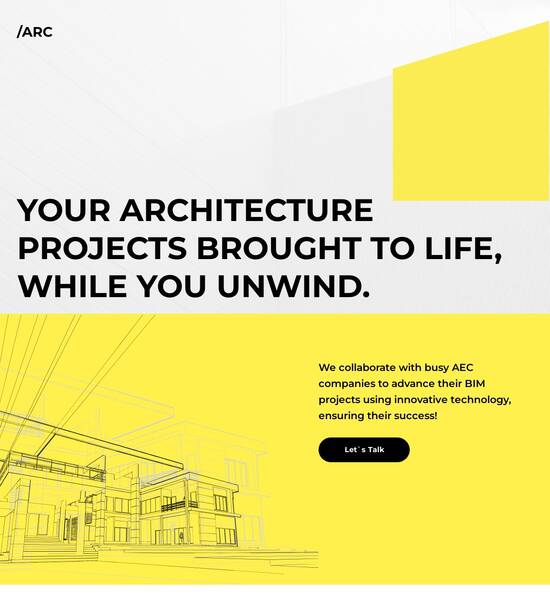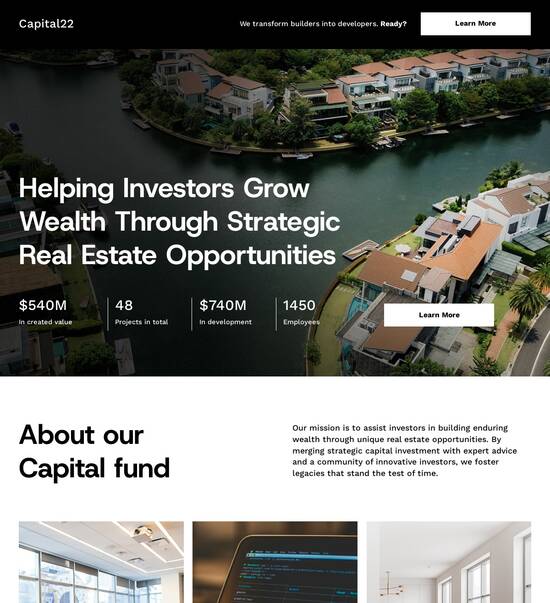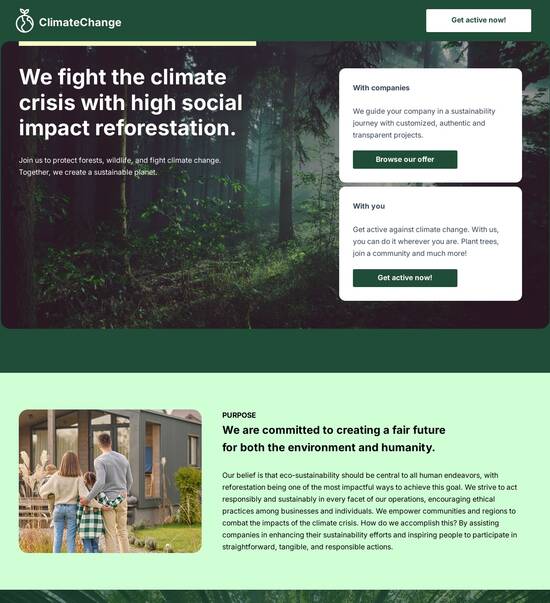
Isometric design 500 internal server error page template
Explore Similar TemplatesAbout template
Unleash your creativity with the isometric design 500 internal server error page template. Try Instapage today.
Recommended templates

Easy to build without coding
With the intuitive drag-and-drop builder, anyone on your team can create high-converting pages without any knowledge of code or design. Make enhancements to your landing page with custom widgets using Javascript, HTML/CSS, or third-party scripts.

Multiple layouts for any industry and goal
Select from 500+ landing page layouts built to boost conversions across industry-specific scenarios. Customize them by adjusting fonts, adding images, and generating on-brand content with the AI assistant. Quickly scale with Instablocks® and Global Blocks that you can save, reuse, and update globally.

Loads fast and looks polished on any device
Every template is responsive, which means they present professionally on any device and load blazingly fast with our Thor Render Engine. You can also power them up with Google AMP technology to deliver an unparalleled mobile experience and drive higher conversions.

Robust analytics & experimentation
Get real-time updates and reporting across all your devices, showing the number of visitors, conversions, cost-per-visitor, and cost-per-lead. Launch AI-powered experiments, run A/B tests, and use heatmaps to analyze user behavior, then optimize your landing page to maximize conversions.







Easy to build without coding
With the intuitive drag-and-drop builder, anyone on your team can create high-converting pages without any knowledge of code or design. Make enhancements to your landing page with custom widgets using Javascript, HTML/CSS, or third-party scripts.
Multiple layouts for any industry and goal
Select from 500+ landing page layouts built to boost conversions across industry-specific scenarios. Customize them by adjusting fonts, adding images, and generating on-brand content with the AI assistant. Quickly scale with Instablocks® and Global Blocks that you can save, reuse, and update globally.
Loads fast and looks polished on any device
Every template is responsive, which means they present professionally on any device and load blazingly fast with our Thor Render Engine.
Robust analytics & experimentation
Get real-time updates and reporting across all your devices, showing the number of visitors, conversions, cost-per-visitor, and cost-per-lead. Launch AI-powered experiments, run A/B tests, and use heatmaps to analyze user behavior, then optimize your landing page to maximize conversions.
All the features you need to build 500 error design
Explore more featuresLearn how to build top-performing landing pages for any goal
FAQs
Leading the way in building high-performing landing pages





Creating effective landing pages with Instapage
In today's fast-paced digital marketing environment, having the right tools can make all the difference in maximizing your ROI. Instapage's powerful landing page and conversion rate optimization (CRO) platform provides marketers across business services, tech/SaaS, and education sectors with efficient solutions to accelerate their campaigns and enhance lead generation.
Why choose Instapage for your landing page needs?
Instapage stands out in the crowded marketplace with its all-in-one design approach. It’s user-friendly and tailored for marketers, allowing you to create stunning landing pages without requiring technical skills. This flexibility is essential, especially for small businesses and marketing teams within larger organizations.
- High-converting templates: Instapage offers over 100 ready-to-use templates to jumpstart your campaigns, tailored to various industries.
- Easy-to-use builder: Customize your landing pages with intuitive drag-and-drop builders, streamlining the design process.
- Comprehensive analytics: Assess your landing page performance effectively through detailed analytics and heatmaps, enabling you to optimize conversion rates.
Steps to create your first landing page
Follow these simple steps to start building your landing page using Instapage:
- Choose a template: Select a layout that aligns with your campaign goals and resonates with your audience's needs. This is your starting point for customization.
- Customize your content: Use Instapage's drag-and-drop feature to personalize text, images, and call-to-action buttons to match your brand.
- Optimize for conversion: Leverage data-driven insights to refine your landing page, ensuring it remains aligned with your audience’s preferences.
Best practices for landing page optimization
To ensure your landing pages perform optimally, consider the following strategies:
- A/B testing: Regularly test different versions of your landing pages to identify which elements lead to better conversion rates.
- Personalization: Tailor content and experiences to match the unique needs of different audience segments, making your landing pages more relevant.
- Mobile optimization: Ensure your landing pages are mobile-responsive, as an increasing number of users browse on their phones.
The combination of these practices will help you refine your strategy and achieve a significant boost in lead generation and conversion rates.
Instapage is not just about creating beautiful landing pages; it’s also about driving measurable results. Begin your journey today and experience the transformative power of smart landing page design.
Ready to optimize your marketing campaigns? Sign up for Instapage and take the first step towards building high-performing landing pages!
People also ask about Isometric design 500 internal server error page template
Isometric design 500 internal server error page template
Understanding the significance of isometric design in 500 internal server error pages
In the online landscape, users inevitably encounter error pages, and how these pages are designed can significantly influence user experience. One innovative approach involves using isometric design, which adds depth and vibrancy to these essential but often overlooked elements of web design. In particular, applying isometric design to the 500 internal server error page template can help maintain user engagement even when there is an issue with the server.
What is isometric design?
Isometric design is a visual representation method that uses parallel projection to depict three-dimensional objects on a two-dimensional surface. This style creates an illusion of depth and perspective by using a specific orientation for the X, Y, and Z axes, giving a more dynamic and engaging feel. Characteristics of isometric design include geometric shapes, vivid colors, and often a playful or whimsical aesthetic, making it an appealing choice for error pages.
Historically, isometric graphics date back to technical illustrations and has evolved significantly, particularly in web development. Initially popularized during the rise of video games and animation, isometric design has slowly found its place in web design, where it enhances user interactions and experience.
The importance of error pages in user experience
Error pages are an inevitable part of the web browsing experience. Statistics show that nearly 70% of users will abandon a website after encountering an error page. Therefore, the design and messaging of these pages are critical. User perception of a site’s credibility can rely heavily on the quality of its error pages: a well-crafted page can mitigate negative experiences and reinforce trust in the brand.
Creative error pages, particularly those employing engaging designs like isometric graphics, can soften frustrations. Utilizing thoughtful messaging combined with appealing visuals can create a more positive impression, ultimately encouraging users to stay on the site or return later.
Isometric design aesthetics for error pages
Key elements of isometric design in error pages often include depth of field, 3D effects, and an array of colors. Depth of field helps create a sense of layering, allowing elements to interact in a visually compelling manner. Additionally, the 3D effects contribute to a more immersive user experience, making the error feel less isolating.
Color theory plays a significant role in influencing user emotions. For instance, warmer colors evoke feelings of comfort and excitement, whereas cooler colors might instill calmness. Choosing the appropriate color palette is vital for ensuring the message is on-brand and resonates with users.
Warm color palettes: Evoke excitement and engagement.
Cool color palettes: Induce calmness and reassurance.
Pastel color palettes: Create a soft, friendly atmosphere.
Crafting the perfect 500 internal server error page template
An effective 500 internal server error page template must balance functionality and aesthetics. Essential components include clear messaging, user guidance, and isometric design aesthetics. Users should immediately understand that an error has occurred and what they can do next. Providing a simple apology, explanations, and links back to the home page or significant sections of the website can help maintain user engagement.
Structuring the template properly involves several sections: a strong header for branding recognition, body content containing informative text, and visually appealing elements that integrate isometric graphics. An effective header and clear messaging will solidify the brand’s identity even amidst an error. The body should deliver user-friendly guidance alongside a compelling visual aspect to enhance overall engagement.
Personalizing your error page template
Personalization plays a crucial role in enhancing user engagement. Tailoring content based on user data and prior interactions can significantly boost user satisfaction. Isometric designs offer a unique approach; you can integrate specific user data to customize messages, making users feel valued and appreciated.
Dynamic content can be used to adjust messages based on user status or past history. For instance, if a user is a returning visitor, you might display a message thanking them for their loyalty while offering them a discount for their next visit. This not only eases frustration after encountering an error but also fosters a positive user experience.
Assembling your assets: graphics and visuals
High-quality isometric graphics can serve as engaging visual assets for error pages. These graphics can illustrate scenarios directly related to the error or provide imaginative representations that align with the brand’s theme. Illustrating the error visually can ease the tension and help users understand the situation better.
You can source high-quality isometric graphics from various platforms or create unique assets tailored to your brand. With the growing popularity of animations in web design, incorporating subtle animations can breathe life into error pages. Simple animations, like a loading spinner or a friendly character, can further engage users and lighten the mood surrounding an error.
Contributions from designers: best practices in error page design
Insights from designers who specialize in isometric design are invaluable for creating outstanding error pages. Many experts emphasize the necessity of balancing creativity with clear communication. Effective error pages should not only look good but also guide users with ample information on what happened and what steps they need to take.
A common recommendation is to keep the messaging light and humorous, provided it aligns with the brand’s voice. Incorporating case studies detailing successful implementations can also provide practical tips and inspiration for designing similar pages. Learning from others’ successes can inform strategies and help avoid common pitfalls.
Challenges and considerations in using isometric design
Despite its attractiveness, there are challenges in utilizing isometric design for error pages. A common pitfall is the tendency to overcomplicate the design, which might confuse users rather than assist them. Striking a balance between creative visuals and functional guidance is essential to ensure users receive the information they need without distraction.
Additionally, it’s important to consider accessibility. Not all users process visual information in the same way, and employing graphic-intensive designs may alienate some visitors. Accommodating diverse user needs and ensuring accessibility is paramount; this includes using alt text for images and providing alternative navigation options.
Future trends in error page design
As user experience continues to evolve, error page design must keep pace with these changes. Innovations in user experience frequently drive new expectations for error notifications. We are likely to see more sophisticated designs incorporating artificial intelligence that personalizes error experiences uniquely for each user, based on their browsing history and preferences.
Having predictable interactions where users can anticipate next steps is becoming a standard expectation. Therefore, isometric design will likely evolve to include more responsive and interactive elements that encourage a seamless experience, even during faults.
Practical steps and tools for creating your isometric error page template
When creating an isometric error page template, various design tools can simplify the process. Software like Adobe Illustrator, Figma, or Sketch offers immense potential for customizing isometric graphics. These tools allow designers to craft unique visuals that align with their brand's aesthetic.
Developing the template involves several key steps. Begin with sketching ideas to visualize layout; use design software to recreate your isometric graphics, and incorporate user-friendly messaging. Finally, integrate the completed design into your existing website framework, ensuring to test it across devices to confirm responsive performance.
Analyzing the performance of your isometric error page
Once your isometric error page is live, tracking its performance metrics is essential. Key metrics to monitor include bounce rates, page views, and user engagement times. This data will offer insights into user interactions with the error page and highlight areas for improvement.
Collecting feedback directly from users can further inform iterative revisions. Feedback mechanisms can be built into the error page, allowing users to report their feelings about their experience. Thus, over time, continuous monitoring and adapting to user responses will optimize the effectiveness of your designed error page.
Real-world examples of effective isometric error pages
Examining successful implementations of isometric error pages provides valuable insights into effective design. Companies that lead in various sectors utilize creative error messaging coupled with engaging visuals, showcasing their branding even during setbacks. For instance, innovative startups often take an unconventional approach, making their error pages a part of their branding narrative.
There are numerous lessons to be learned from both large corporations and small businesses. Notably, small businesses can stand out with unique designs that reflect their identity. By analyzing the strength of their approaches, marketers can develop impactful strategies that resonate with their own audiences.
Ready to skyrocket conversions?
Supercharge your ad campaigns with high-performing landing pages
Get started














